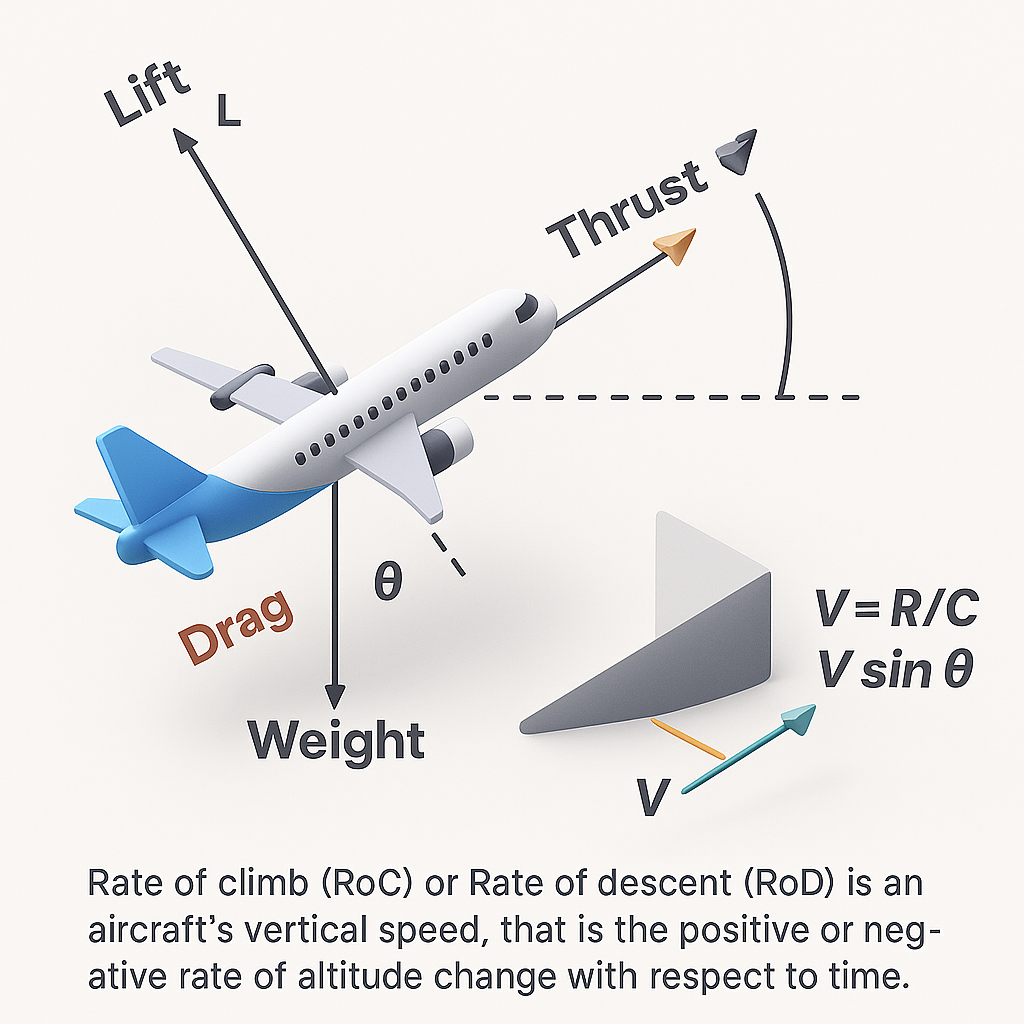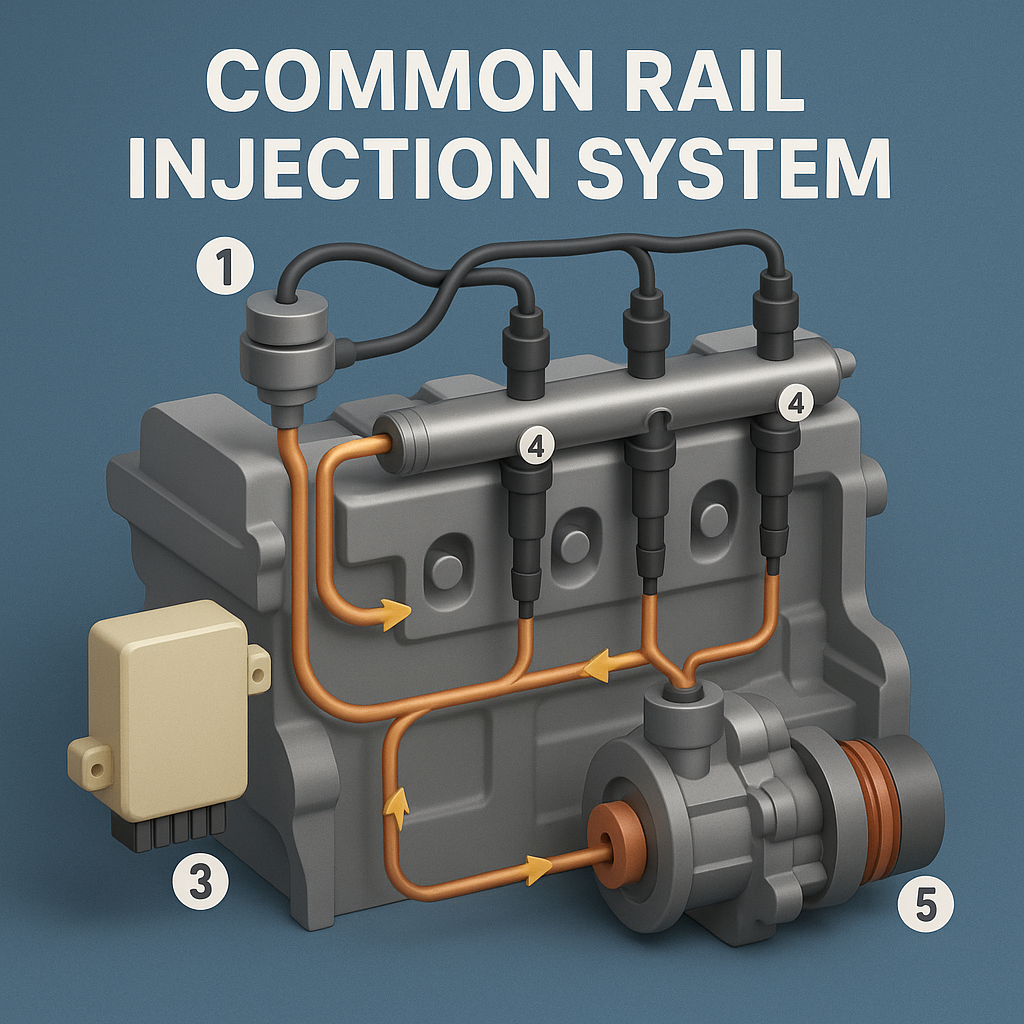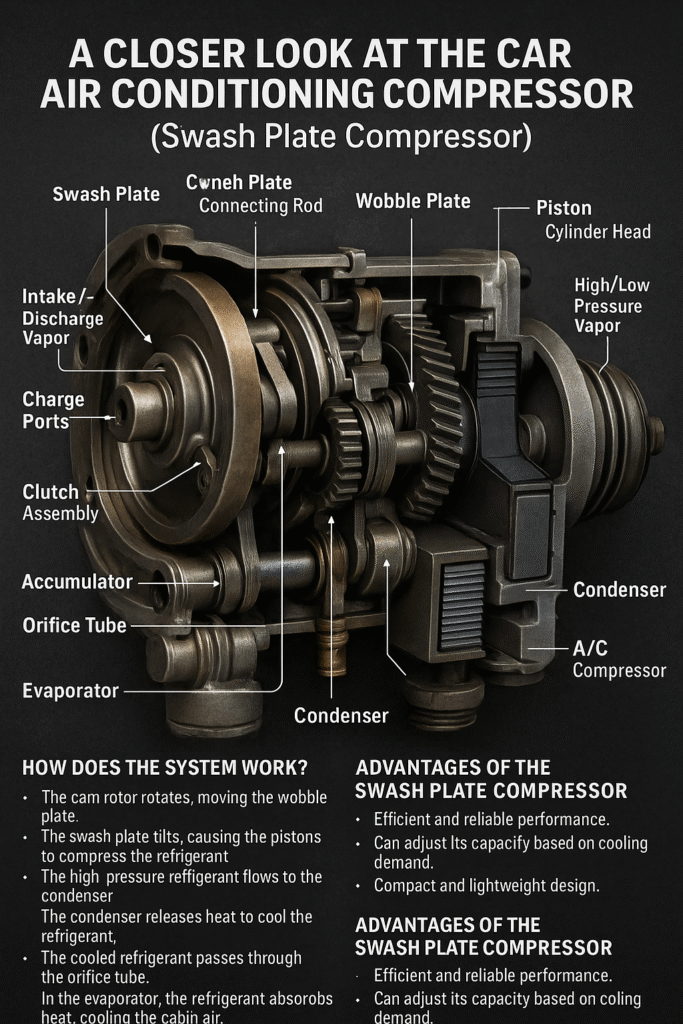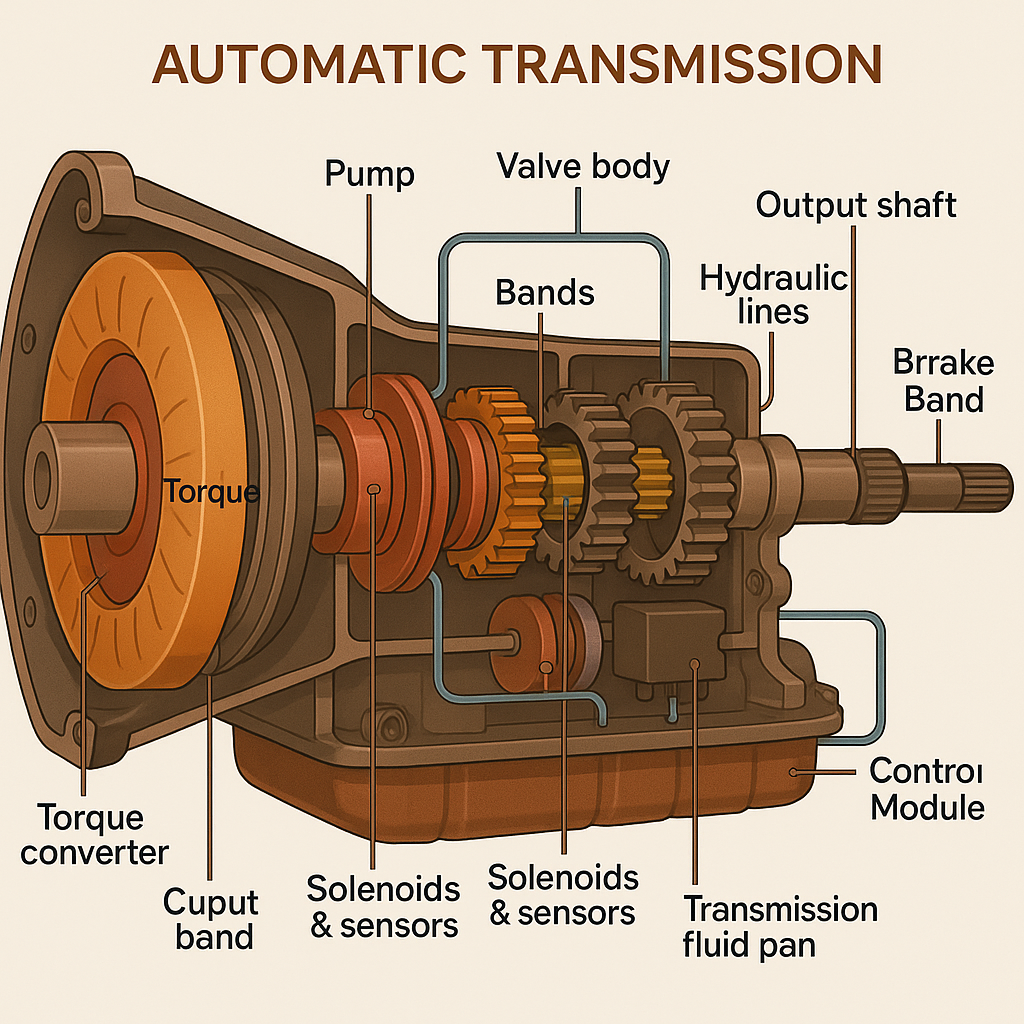Rate of climb ( RoC) or Rate of descent (RoD)



Modern diesel engines rely on advanced fuel injection technology to maximize performance, fuel efficiency, and emissions control. The Common Rail Injection System is at the heart of this transformation, replacing older mechanical systems with precise, high-pressure, computer-controlled fuel delivery. How It Works: Key Components 1️⃣ High-Pressure Pump (5) 2️⃣ Common Rail (2) 3️⃣ Injectors (4) 4️⃣ Pressure Sensor & Regulator (1 & 3) 🚦 Why Is This System So Effective? 🏁 In Short: The common rail system is the backbone of modern diesel performance. It delivers precise, high-pressure fuel to each injector, managed by smart sensors and regulators, resulting in engines that are more powerful, cleaner, and more efficient than ever before.

The Swash Plate Compressor is a widely used type of air conditioning compressor in modern vehicles. Its unique design offers a blend of efficiency, reliability, and compactness, making it a preferred choice in many automotive A/C systems. 🚨 Main Components (with Expanded Descriptions): 🚨 Additional Details: Swash Plate Compressor Design 🚨 How the System Works (Step-by-Step) 🚨 Advantages of the Swash Plate Compressor In summary:The Swash Plate compressor is a critical, advanced component of modern automotive A/C systems. It efficiently compresses and circulates refrigerant to ensure rapid, reliable cooling—providing both comfort and safety for drivers and passengers. Edit By: Dr. Engineer / Adel Ramadan

An automatic transmission is a sophisticated type of vehicle transmission system designed to automatically shift gear ratios as the vehicle moves, eliminating the need for the driver to manually change gears. Unlike a manual transmission, which requires the driver to engage and disengage the clutch and select gears, an automatic transmission handles all of these tasks seamlessly and efficiently, allowing for a more convenient and comfortable driving experience. Primary Function:The main purpose of an automatic transmission is to optimize the relationship between the engine’s power output and the rotational speed of the wheels. By automatically adjusting the gear ratio, it ensures that the engine operates efficiently under various speeds, loads, and driving conditions. This leads to smoother acceleration, better fuel efficiency, and reduced wear on engine components. How It Works:Automatic transmissions use a complex system of hydraulic controls, sensors, and computer systems to monitor driving conditions and determine the appropriate gear. Key mechanical components include: Key Features: Benefits:Automatic transmissions are praised for their ease of use, making driving less stressful and more accessible. They contribute to smoother gear changes, improved comfort, and, in many cases, better fuel efficiency thanks to advancements in electronic control and gear design. Edit By. Dr. Engineer / Adel Ramadan